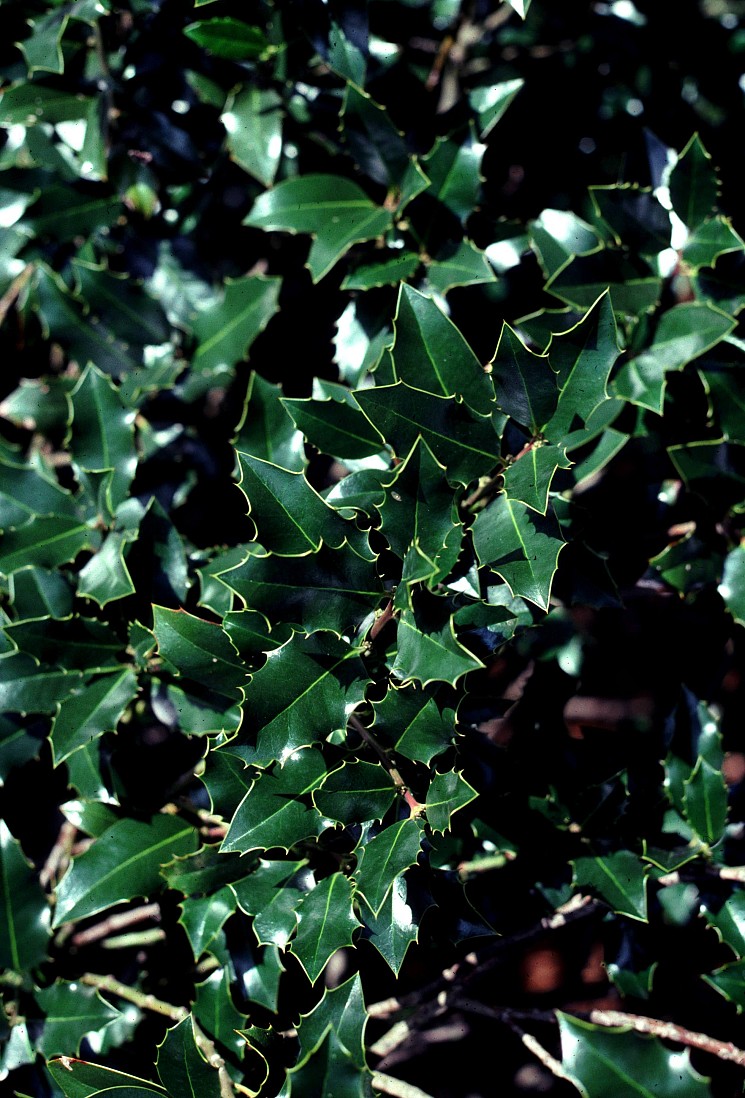Ilex aquifolium

As the holly growth green
And never changeth hue,
So I am, ever hath been,
Unto my lady true.
Henry VIII, King of England
While some knowing readers may cast a skeptical eye towards Henry VIII’s (1491-1547), poetic, romantic fidelity (he was married six times), no one doubts that English Holly, Ilex aquifolium grows green. This broadleaf, evergreen, large shrub, or pyramidal tree, is native to the British Isles, western and southern Europe, North Africa, and western Anatolia. The lustrous, dark-green, thick, undulating, spiny-margined leaves are from 1 to 3 inches long, and last about five years. Leaves on lower branches are often more prickly than those occurring on higher branches. This is an adaptive defense to deter grazing animals from eating the leaves, but also provides effective shelter, especially in winter, for numerous species of birds. As a dioecious plant, the small, whitish, male and female flowers occur on different plants. The pea-sized, red fruits, maturing in October or November, offer a striking contrast to the evergreen leaves, and provide valuable winter food for birds and wildlife.
Of course, many people know English Holly because of its frequent use to decorate houses, businesses, and churches, during our winter holidays. This modern tradition may be traced back at least two millennia, to the celebrations of Saturnalia, when Romans sent holly boughs to friends as tokens of good wishes. This was a time when holly was a fertility symbol, and holly wreaths were often sent to newlyweds. Such fraternal customs along with a wealth of folklore have grown around this tree, and Fred C. Galle in his 1997 book, Hollies: The Genus Ilex provides many accounts. For example, Druids considered this holly sacred, due to its evergreen character. Pliny the Elder (23AD-79AD), the renown Roman author, naturalist, and natural philosopher, nonetheless, wrote that a holly planted at a house protected the property from both lightning strikes , and kept away evil spirits. Earlier, Pythagoras (c. 570- c. 495 B. C.), the Greek philosopher, mathematician, scientist, and mystic wrote, according to Galle, “if a staff made of holly is flung at a (mad) dog, the beast would lie quietly near it.”
Not surprisingly, there were later also many beliefs in the effective use of holly in herbals, healing and for gardening . Nicholas Culpepper (1616-1654), English botanist, herbalist, and physician noted numerous virtues of the holly tree. John Evelyn (1620-1706), English writer, and gardener also discussed English Holly in his classic 1664 book, Sylva or a Discourse of Forest Trees, “…leaves of the Holly trees, dried to a fine powder and drank with white wine, are prevalent against the stone, and cure fluxes…”.
On your next visit to Mount Auburn, recall this plant’s lengthy and interesting history, or just enjoy a winter walk, as you look for specimens of English Holly on Indian Ridge Path, Marigold Path, Begonia Path, Redbud Path, Arethusa Path, Orient Path, or Eagle Avenue.
Leave a Reply